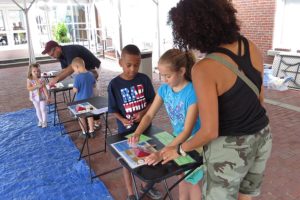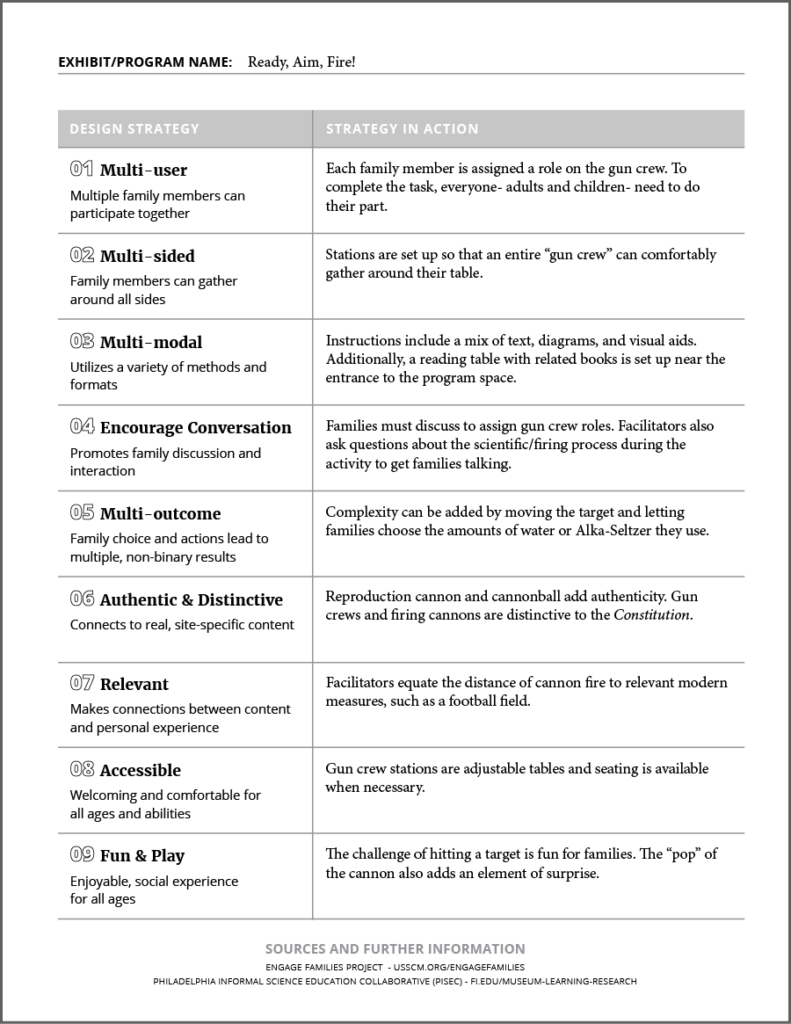Program Overview
Operating a cannon aboard the USS Constitution required a great deal of teamwork on the part of the crew and a reliance on scientific forces. Ready, Aim, Fire! invites families to try this first hand as they load and fire an Alka-SeltzerTM cannon at a target. The goal is to provide families with an understanding of both the science and the teamwork necessary to operate cannons through this fun activity.
Download the Design Strategies Worksheet to use at your institution.
Design Strategies WorksheetProgram Setup
The layout and set-up of our programs has a large impact on the experience of visitors. Guided by our design strategies and enhanced through evaluation, we created a layout for Ready, Aim, Fire! that encourages the inter-generational participation and fun we hope to see.
Accessible
Families load and fire their cannons from distinct gun crew stations. These stations are adjustable tables that we use for other programs, including Built to Win. That flexibility allows us to make a variety of family groups comfortable. Each table has the parts to assemble a cannon, and a visual aid with instructions that make clear all ages are encouraged to participate.
Multi-Sided
Our program environment and set-up allows family members to stay together and interact with one another naturally. There are two areas in the space: an introduction area with the museum’s full scale model cannon, and the firing area with gun crew stations and target. The introduction area is kept separate from the firing area which gives visitors cues about how the areas will be used. Within each space, there are multi-sided stations. The cannon is placed so that children and adults can access it from all sides, and the gun crew stations are positioned so that families can gather around the entire table as they work.

Multi-Modal
As with many of our gallery programs, for Ready, Aim, Fire!, we set up a reading table of reference books next to the courtyard entrance. There are books for both adults and children, giving families another access point to the content. Facilitators often use the books to offer instructional images if families want more visuals.
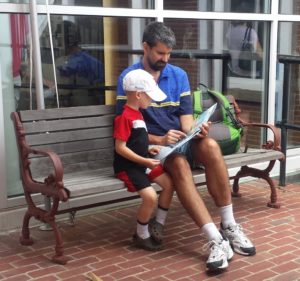
Program Description
Ready, Aim, Fire! runs about 45 minutes. It begins with an introduction to the historical context and scientific concepts and then gives families the chance to put those concepts to action by loading and firing a cannon at a target ship.
Authentic and Distinctive
The experience of firing a cannon is one that is distinctive to a vessel like Constitution, which had 55 guns on board during the War of 1812. Facilitators provide the context for this in their introduction to families. They share these facts, but also invite families to have a sensory experience. The model cannon is a strong visual aid for explaining cannon operation aboard Constitution. Facilitators also pass around a 32 lbs. reproduction cannonball- just like those that were used in the War of 1812- so families can feel the weight of it.
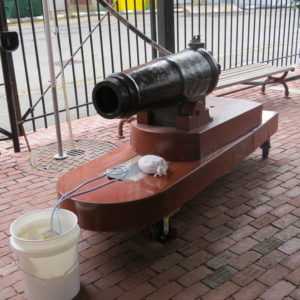
Relevant
The introduction to historical and scientific concepts can understandably, include a lot of facts and figures. One way that facilitators make this relevant is by making connections through equivalent measurements. For example, cannons can propel a cannonball up to 400 yards. To help adults and children visualize that distance, facilitators often equate it to the length of four football fields. No person could throw a football (let alone a 32 lbs cannonball) that far, and that is why we need to rely on the chemical reaction that takes place within the cannon.
Multi-User
Facilitators address and make eye-contact with family members of all ages to send an invitation to participate. At the gun crew stations there are four crew cards with a corresponding task necessary to firing the cannon. Assigning roles is a good way to encourage participation from multiple family members. Because there is more than one opportunity to fire the cannon, groups can take turns with different gun crew assignments.

Facilitators also recognize that there are different ways of actively participating in the activity and are sure to comment positively on photography, drill timing, or cheering, for example.
Multi-Modal
The instruction card present at each gun crew station presents information in a variety of ways. A mix of text, images, and objects offers different ways to engage with the content and understand the activity.

Multi-Outcome
In Ready, Aim, Fire!, families are given at least 2 attempts to fire the cannon, encouraging them to switch roles and allowing the facilitator to change some of the variables. Moving the location of the target, letting families choose the amounts of water or Alka-SeltzerTM they use, or allowing families to shake the canister introduces choice and changes the outcome of the activity.

Encourage Conversation
The facilitator encourages conversation throughout the activity. During the introduction, instead of a lecture, he or she tries to involve the families in the discussion. This can be done through making the activity relevant to their modern lives or asking questions and seeking answers from each participant. Throughout the demonstration and the firing process, facilitators further prompt conversation by encouraging families to observe, question, and describe what they see happening. This is especially constructive when some of those variables begin to change.
The materials provided at each gun crew station also encourage conversation between family members. They must assign roles and decide who is best suited for each task based on individual personalities and strengths.
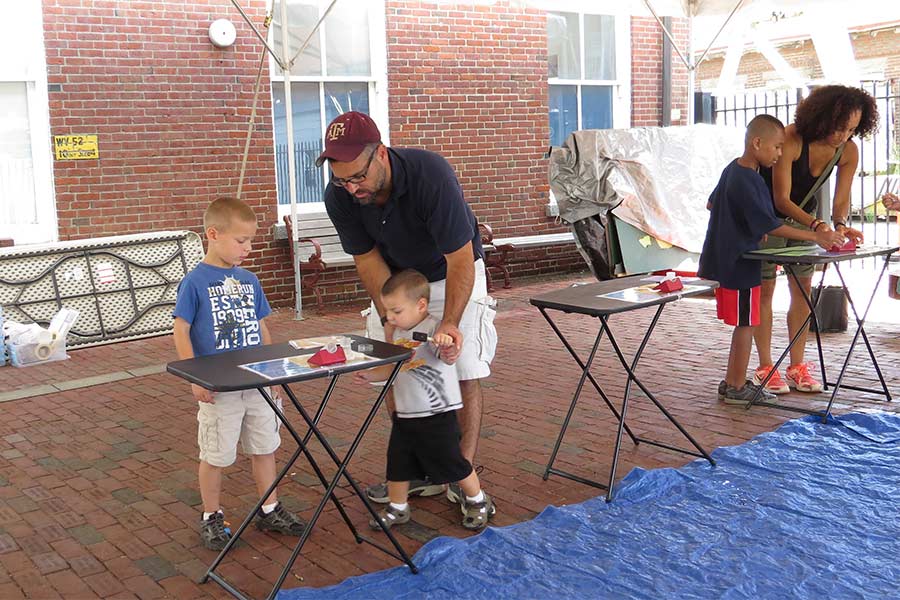
Fun and Play
During Ready, Aim, Fire! families experience first-hand the teamwork and scientific process that was necessary to operate cannons on a frigate like Constitution. But it is also a chance for them to have fun while they learn. Elements like the blue tarp which represents the ocean, a painting of a ship that acts as a target, and even the surprising “pop” of the Alka-SeltzerTM cannons create a playful environment. When families have fun, they are more receptive to learning. And when participating in Ready, Aim, Fire! families always have a blast!
